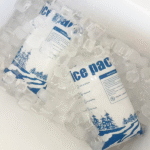Long-Lasting Dry Ice Packs: The Ultimate Cold Chain Solution for Extended Shipments
In the world of cold chain logistics, maintaining the optimal temperature of sensitive shipments is critical. Long-lasting dry ice packs offer an ideal solution for temperature-sensitive goods like pharmaceuticals, food, and biotechnology products. These packs keep items frozen for extended durations, often up to 72 hours or more, without the mess of melting water. This article explores why long-lasting dry ice packs are becoming a preferred choice for long-distance shipments, providing valuable insights into their benefits, usage, and best practices.

What Makes Long-Lasting Dry Ice Packs the Best Choice for Long-Distance Shipments?
Long-lasting dry ice packs stand out because they offer extended cooling durations, making them ideal for long-distance shipments. Unlike traditional ice packs, which melt and create water runoff, dry ice sublimates directly from a solid to a gas. This ensures no water damage to sensitive products, maintaining product quality and safety during transit.
How Dry Ice Packs Work Effectively
Dry ice packs are made from solid carbon dioxide (CO₂), which sublimates at -78.5°C (-109.3°F). Unlike regular ice, which turns into liquid as it melts, dry ice skips the liquid phase, evaporating directly into gas. This unique property makes it a cleaner and more effective cooling method for shipments requiring sub-zero temperatures.
Key Benefits of Dry Ice Packs
| Feature | Benefit | Why It Matters |
|---|---|---|
| Superior Cooling | Maintains temperatures between -78.5°C and -40°C for extended periods | Ideal for deep-freezing, including vaccines and frozen foods |
| No Mess | Sublimates into gas, leaving no liquid residue | Prevents water damage and reduces handling issues |
| Cost-Efficiency | Reduced frequency of replacements and waste management | Lower shipping costs and cleaner operations |
| Long-lasting | Packs last up to 72 hours or more depending on conditions | Suitable for long-distance, international, or multi-day shipments |
Best Practices for Using Dry Ice Packs
-
Insulated Packaging: For optimal performance, dry ice packs should be used in combination with insulated boxes or coolers. This ensures the sublimation rate of dry ice is minimized, allowing for longer cooling periods.
-
Monitor Temperature: It is critical to track temperatures throughout the shipment to ensure that the cold chain is maintained. Consider using temperature loggers for real-time updates.
-
Safe Handling: Always use gloves and eye protection when handling dry ice, as it can cause severe frostbite if touched directly.
How Do Dry Ice Packs Compare to Traditional Cooling Methods?
When compared to traditional cooling methods such as gel packs or regular ice, dry ice packs offer distinct advantages. Unlike ice, which melts and creates a mess, dry ice ensures that the contents of the shipment remain dry and consistently cold.
Benefits of Dry Ice Over Traditional Cooling
-
No Liquid Waste: As dry ice sublimates, it avoids the problem of water runoff that often comes with traditional ice, which can damage goods.
-
Longevity: Dry ice outlasts traditional ice, which means fewer replacements during long transit times. This not only reduces operational costs but also ensures a more reliable temperature control.
-
Consistency in Cooling: Dry ice maintains a consistent, ultra-low temperature for hours, while regular ice loses its cooling power faster and often requires replenishment during transit.
Tips for Transitioning to Dry Ice
-
Evaluate Current Needs: Review whether your existing cooling methods are meeting your logistics needs or if dry ice can provide a more reliable solution.
-
Staff Training: Make sure your logistics team is trained in the proper handling and safety procedures for dry ice to avoid accidents and inefficiencies.
-
Track Performance: Consistently monitor temperature performance to ensure dry ice is providing the required cooling efficiency.
What Are the Key Advantages of Using Long-Lasting Dry Ice Packs in Your Business?
Long-lasting dry ice packs offer several key advantages, especially for industries like food distribution, pharmaceuticals, and e-commerce, where maintaining product quality during transit is paramount.
Cost-Effectiveness and Environmental Benefits
Dry ice packs reduce the frequency of replacements needed during transport, lowering overall shipping costs. Additionally, because they sublimate and leave no liquid behind, dry ice is an eco-friendly solution that eliminates water runoff, which can be harmful to the environment.
Industry-Specific Advantages
-
Pharmaceuticals: Essential for shipping vaccines and medications that need to be kept at specific temperatures, often below freezing.
-
Food Service: Ensures perishable items like meats and seafood are transported at safe temperatures, preventing spoilage and waste.
-
E-commerce: With the rise in demand for fresh and frozen goods in online shopping, dry ice provides a reliable solution for preserving product quality during delivery.
2025 Trends in Long-Lasting Dry Ice and Cold Chain Innovation
As we move into 2025, the cold chain industry is seeing significant advancements in dry ice technology, making it an even more viable solution for businesses across various sectors.
Latest Developments in Dry Ice Technology
-
Sustainability: Companies are increasingly adopting dry ice made from recycled CO₂, a step toward reducing the carbon footprint associated with traditional ice production.
-
Smarter Logistics: The integration of IoT-based temperature monitoring systems is helping companies track shipments in real-time, ensuring better accountability and temperature control.
Market Insights
The demand for long-lasting dry ice packs is expected to grow as industries such as food and pharmaceuticals continue to expand. The consumer preference for sustainable and reliable shipping solutions is pushing businesses to adopt greener practices, making dry ice a key player in the logistics sector.
Frequently Asked Questions
Q1: How long do long-lasting dry ice packs last?
A1: Depending on factors like quantity, insulation, and temperature, dry ice packs can last anywhere from 24 to 72 hours, ensuring products remain frozen during long shipments.
Q2: Can dry ice be used for international shipments?
A2: Yes, dry ice can be used for international shipments, but it must meet the specific regulations of the destination country, including packaging, labeling, and documentation.
Conclusion and Recommendations
Long-lasting dry ice packs are a game-changer for cold chain logistics, providing efficient, cost-effective, and environmentally friendly solutions for temperature-sensitive shipments. By transitioning to dry ice, businesses can improve product quality, reduce waste, and lower shipping costs. To implement this solution, companies should evaluate their cold chain needs, train their teams on safe handling, and begin testing dry ice in pilot shipments to measure its effectiveness.
About Tempk
At Tempk, we specialize in providing innovative cold chain solutions, including long-lasting dry ice packs that ensure your goods arrive safely and efficiently. Our products are designed for sustainability and optimal cooling efficiency.
Call to Action: Contact us today to learn how Tempk’s long-lasting dry ice packs can enhance your cold chain logistics.























